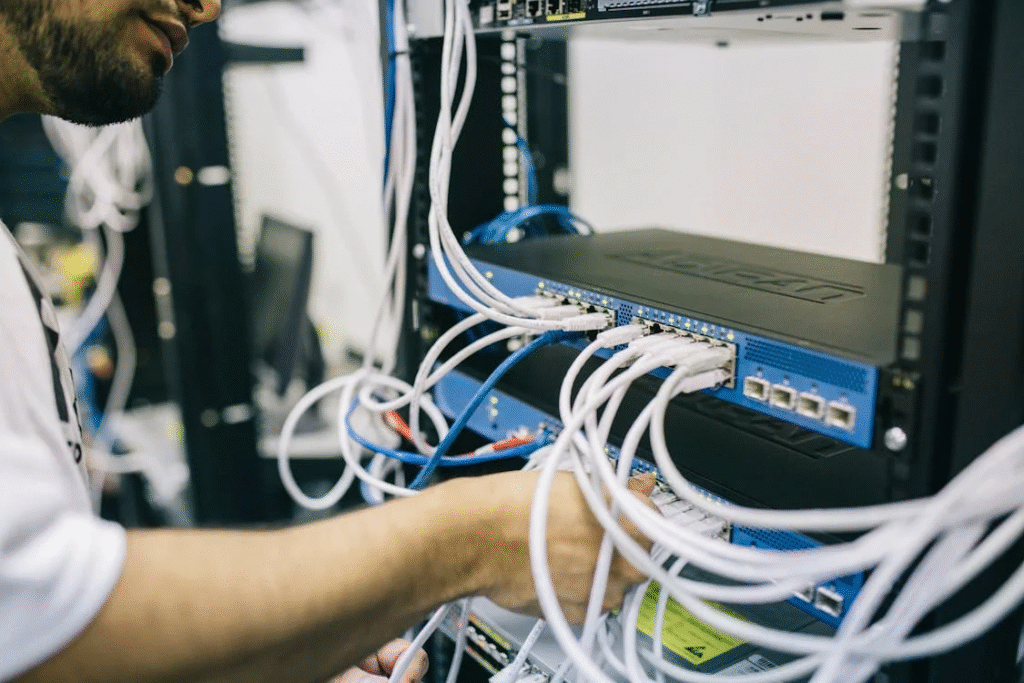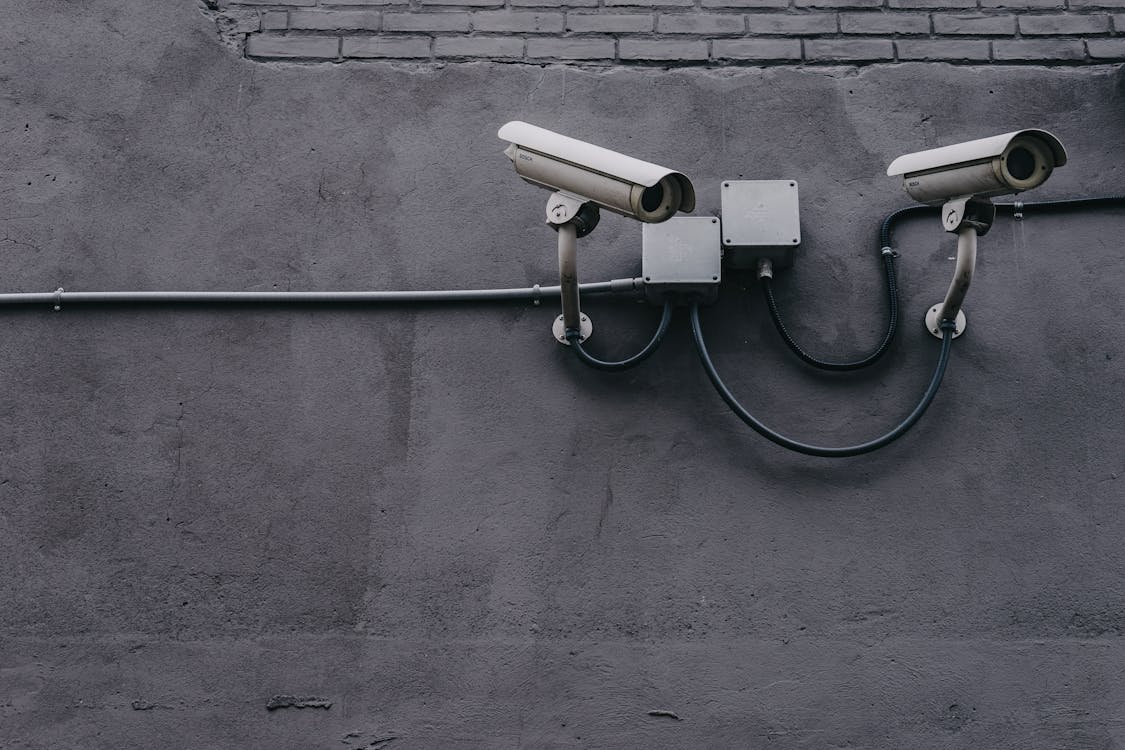
Introduction
In an age where security is paramount, surveillance systems have evolved from standalone analog setups to sophisticated, network-driven solutions. Structured cabling has become the backbone of reliable and scalable CCTV deployments. For Security Managers and Facility Supervisors, understanding how to effectively integrate CCTV systems within structured cabling frameworks is essential for ensuring seamless surveillance coverage, future scalability, and robust network security.
Key Highlights:
Importance of modern surveillance
Benefits of structured cabling in CCTV
Strategic guide for effective integration
Understanding Structured Cabling & CCTV Basics
What is Structured Cabling?
Structured cabling refers to a standardized architecture for cabling infrastructure that supports multiple hardware systems and is suitable for today’s high-speed data and communication demands.
Components Include:
Patch panels: Consolidate and organize cable terminations.
Horizontal cabling: Links workstations to telecommunications rooms.
Backbone cabling: Connects equipment rooms and entrance facilities.
Work area outlets: Provide end-user connectivity.
Cable pathways and management systems: Ensure tidy and safe routing.
Benefits:
Simplified future upgrades
Improved maintenance
Consistent performance across devices
Reduced downtime and technical errors
Overview of Modern CCTV Systems
IP-based surveillance systems have largely replaced analog ones. These modern security camera come with high-definition recording, remote access, and smart analytics.
Features:
Higher resolution (HD/4K)
Motion detection, facial recognition
Remote monitoring through cloud platforms
Network-based data transmission with real-time access
Advantages of IP Cameras:
Integration with existing LANs
PoE (Power over Ethernet) support
Reduced need for extra power sources
Centralized recording and management
Why Integration Matters
Benefits of Structured Cabling in CCTV Deployments
Integrating CCTV with structured cabling brings several operational and performance benefits:
Reliability: Stable connections and minimal downtime.
Scalability: Supports the addition of new devices without major rewiring.
Performance: Handles high-bandwidth video traffic efficiently.
Future-proofing: Compatible with 4K and AI-enhanced surveillance systems.
Simplified troubleshooting: Clear labeling and documentation reduce repair time.
Common Pitfalls When They Don’t Align
Cable clutter and confusion: Unstructured layouts lead to delays and errors.
Bottlenecks: Low-grade cables choke data flow, affecting footage quality.
EMI (Electromagnetic Interference): Poor planning near power lines causes disruptions.
Limited expandability: Haphazard setups complicate system upgrades.

Planning Your Integration Strategy
Site Assessment & Requirements Gathering
Effective integration begins with detailed analysis and planning:
What to Evaluate:
Facility blueprint: Entry points, security zones, blind spots.
Environmental conditions: Indoor vs. outdoor camera requirements.
Distance limitations: Ethernet runs should be under 100m.
Power sources: Identify where PoE will be viable.
Selecting the Right Hardware
Choosing the right equipment ensures longevity and high performance.
Hardware Checklist:
Cat6a/Cat7 Ethernet cables for bandwidth and shielding
Managed PoE switches for device-level control
Patch panels to centralize connections
Network video recorders (NVRs) for centralized footage storage
Racks and cable management systems for neatness
Surge protectors and grounding to prevent electrical damage
Network & Security Considerations
Security is just as important as functionality.
Network Configuration Tips:
Use VLANs to isolate CCTV traffic from general network traffic
Set QoS policies to prioritize video packets
Enable port security on switches
Apply encryption for data in transit
Regularly update firmware for cameras and switches
Installation Best Practices
Physical Cable Routing & Labeling
Tidy installation reduces errors and boosts efficiency.
Best Practices:
Use cable trays and conduits to route wires
Avoid tight bends and pulling tension
Label each end of the cable with origin and destination
Apply a consistent color code system
Maintain separation from power lines to avoid EMI
Power over Ethernet Implementation
PoE simplifies installation by transmitting both data and power over Ethernet.
PoE Integration Tips:
Calculate total power load for all devices
Select switches that match or exceed device needs
Use midspan injectors for older switches
Verify cabling supports PoE+ (25.5W) or PoE++ (up to 90W)
Implement power redundancy where possible
Testing, Troubleshooting & Certification
Every system must be tested and certified post-installation.
Testing Checklist:
Continuity and wiremap testing with cable testers
Bandwidth testing using network analyzers
Visual inspection for physical defects
Certification for ANSI/TIA cabling standards
Document test results and network topology
Ongoing Management & Maintenance
Monitoring & Alerting
A robust monitoring framework is vital for operational success.
Monitoring Tools:
SNMP-based tools (e.g., PRTG, Zabbix)
Camera health dashboards from NVR vendors
Automatic alerts for camera downtime
Log tracking for access attempts and system anomalies
Scaling & Upgrading the System
Plan growth strategies from the beginning to avoid disruptions.
Upgrade Planning:
Leave spare ports in patch panels and switches
Opt for modular switches and scalable NVRs
Use cable trays with additional space for future cabling
Consider migration to 10Gb Ethernet for large-scale operations
Compliance & Audit Considerations
Maintaining a secure and lawful surveillance system is non-negotiable.
Compliance Actions:
Adhere to GDPR and local privacy laws
Implement role-based access control (RBAC)
Maintain audit trails for changes and access
Schedule regular compliance reviews and penetration testing
Expert Installation Tips
Avoid PoE overloads: Stick to manufacturer power ratings
Separate power and data: Use different conduits or trays
Document everything: From port assignments to cable test results
Label all cables: At both ends and in your digital map
Use high-quality connectors: To prevent signal loss
Schedule maintenance checks: Every 6–12 months
Conclusion & Next Steps
Integrating CCTV systems with structured cabling isn’t just a smart move—it’s essential for any facility aiming for a secure, scalable, and future-ready surveillance infrastructure. With thoughtful planning, quality components, and adherence to best practices, you’ll be equipped to manage and expand your system efficiently.
Final Takeaways:
Design smart: Plan for growth from day one
Invest in quality: Use certified cables and tested hardware
Stay compliant: Follow legal and IT best practices
Partner wisely: Work with professionals for successful outcomes
Need expert help? Contact professionals who specialize in structured cabling and CCTV integration to ensure your surveillance infrastructure is built to perform today—and adapt tomorrow.
